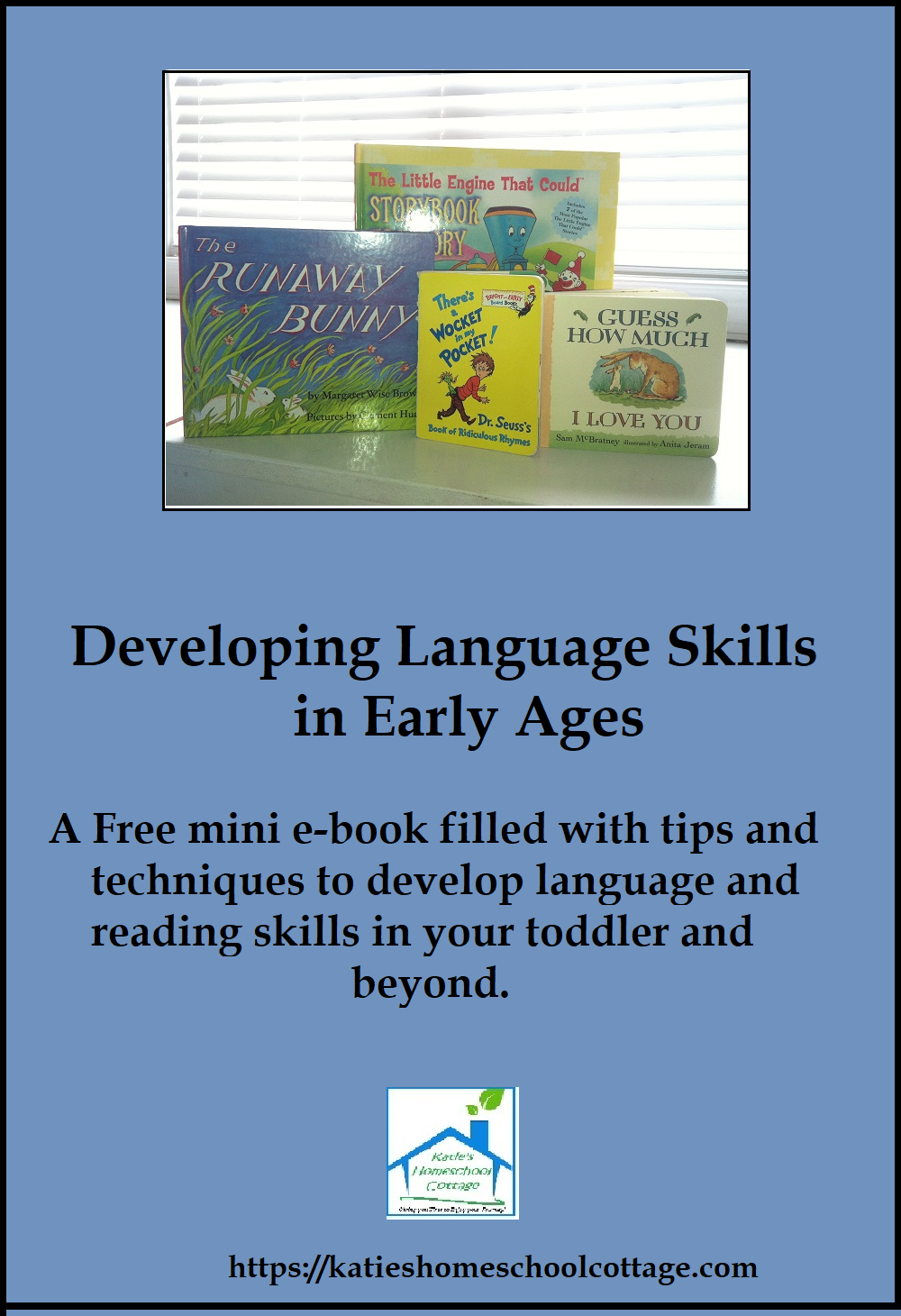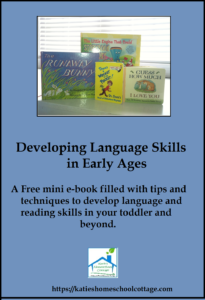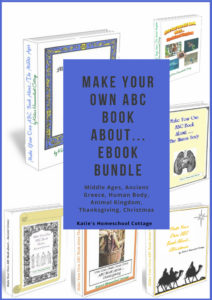As a homeschooler, do you wonder if you will be able to teach your child to read? Developing language skills is one of the first important skills we tackle.
There are some techniques and activities that you can include in your days from the very beginning to foster those literacy skills and eventually move into more formal instruction as your homeschooler gets older and shows reading readiness.
Reading Aloud to your Children at a Young Age
It is important to read to your child from the time they are born up until and even through high school (if that is your family’s thing). Reading, even at a very young age at a time where you question if they can even understand you, is an important first step in developing language skills and forming a bond and learning to enjoy reading together.
Aside from conversing with your child about the world around them while pointing out things throughout your day or singing or reciting nursery rhymes or finger plays, reading gives your young one the chance to have your undivided attention where he/she can just be close and listen to the sound and the rhythm of your voice.
This is important. That time together soon becomes expected, anticipated, and cherished as part of your daily and evening routine. It also allows your child to hear the fluctuations in your voice while speak different kinds of words and sentences, helping him/her notice sentence and speech patterns.
As your baby grows into the toddler ages, you will point out the words on the page of the book while you say them. This technique naturally helps your little one make the connection between the words you say and the markings you are pointing out on the page. Talking about the story and pointing at the pictures and asking your child questions about the pictures also builds concepts and connections.
Pick out books or reading material that have the 3 R’s
When you decide what you want to read together, try to choose some books or reading material that have what I call the 3 R’s –
- Rhyme
- Rhythm
- Repetition
If read books with these three patterns, your child will naturally pick up on the use of these words and also remember them. That’s why children can easily remember and recite nursery rhymes. The rhyme, rhythm, and repetition makes it easier for us to remember and recite them.
After reading a book often enough, your child will soon tell you he/she wants to read to you. They will recite the story from memory and turn the pages as they go along as though they are reading the words on the page. You will see connections they have made between the story pattern and the pictures on the pages to help cue them as to when they should turn the page.
They are on their way to understanding “how to read a book”. They have learned they we read in English from left to right and that are books are printed in a way that the story is being told at the beginning and we read the pages left to right and turn the pages until the end in that direction.
Soon, common short sight words will follow. They will also imitate your inflections when you say certain words or speak certain kinds of sentences with various forms of punctuation, such as a question, statement, or exclamation. All of these are important skills coming together.
It’s important to note, that different children will develop these skills and show interest in these activities at different ages and at a different pace.
I had one who showed no interest in even looking at letters and would run away from me as soon as I tried to point to a magnetic letter on the refrigerator and say its name and sound. He showed really no interest in learning to read until one day near the end of first grade after turning 7 when he picked up a little reader and rapidly read it off cover to cover, barely glancing at it.
My chin hit my chest and I opened the book to a random page and asked him to say different words as I pointed to them. I wanted to make sure he wasn’t just reciting the book from memory. He read each word correctly. A light switch had turned on for him.
With another son, we used Hooked on Phonics because he showed he needed a more structured and developmental approach to learning sounds, letters, and words. It was hard work but it paid off and he was reading several grades above his level by the time he was in fourth grade and learned to love reading.
I had noticed some language skills that we needed to development along the way that indicated we needed to work on those before pushing the reading skills, like speech issues and writing letters and numbers transposed. We used Dianne Craft’s Brain Integration Therapy, which for me was a blessing. She has some great articles and materials to use if you feel your child might have some learning challenges.
Beginning Narration and Writing Skills
As you move from preschool years into early elementary ages, you will want to have your child narrate little stories to you. They can be just a few sentences of a story they want to tell you or from something short that you may have read together.
This is where those pads of paper with the large space at the top and lines on the bottom half of the page come into play.
Here are notebooking pages we used to draw and write our narrations!
You can tell your little one to draw, color, or paint a picture in the blank space at the top of the page. When they are done, they can tell you in their own words what is happening in the picture. As they tell you, you can write down the words on the lines.
They will see that their words they speak are being changed into words you are forming on paper with letters and spaces. As you continue to work in this way, you can also point out that you are starting out each sentence with a “big” or “capital” letter and ending the sentence with a dot called a “period”.
Making reading a natural thing in your home
To reinforce the language skills being acquired and to develop the love for reading, you can bring it into your home as part of your daily routine.
Going to the library and story times were weekly routines for us and much anticipated. We would bring a laundry basket with us when we checked out books and keep it in the corner of the living room next to our book shelf. We had one of those little child sized lounge type chairs next to the basket with a throw blanket thrown over the back of it for our reading nook.
We would build tents in the livingroom and lay blankets and pillows underneath and bring books in their to read together. A trip to the park included playtime, trail walks, lunch or snack, and storytime on a blanket on the grass. We would even just go out in our backyard for a picnic and reading. We always had a couple of books right before nap and right after baths and before bed. Even our pets joined us each night.
At naptime, quiet time, or bedtime books were brought to bed or listened to on tape or cd. On road trips, books on tape or cd were listened to while running errands or going on a family trip.
Reading and language development became a natural part of our daily routine and lifestyle. And it has stuck through college. So, don’t be afraid to begin too early. It’s never too early to develop that close bond that this time together can bring.
I have a mini e-book I wrote with specific books and authors we used with these language skill development techniques you may find helpful in your homeschool – Developing Language Skills in Early Ages.
If you have found this helpful, maybe you know other homeschoolers who may enjoy using these tips with their children. Please feel free to click on any of the share buttons below.
As always, enjoy your homeschool journey!!







